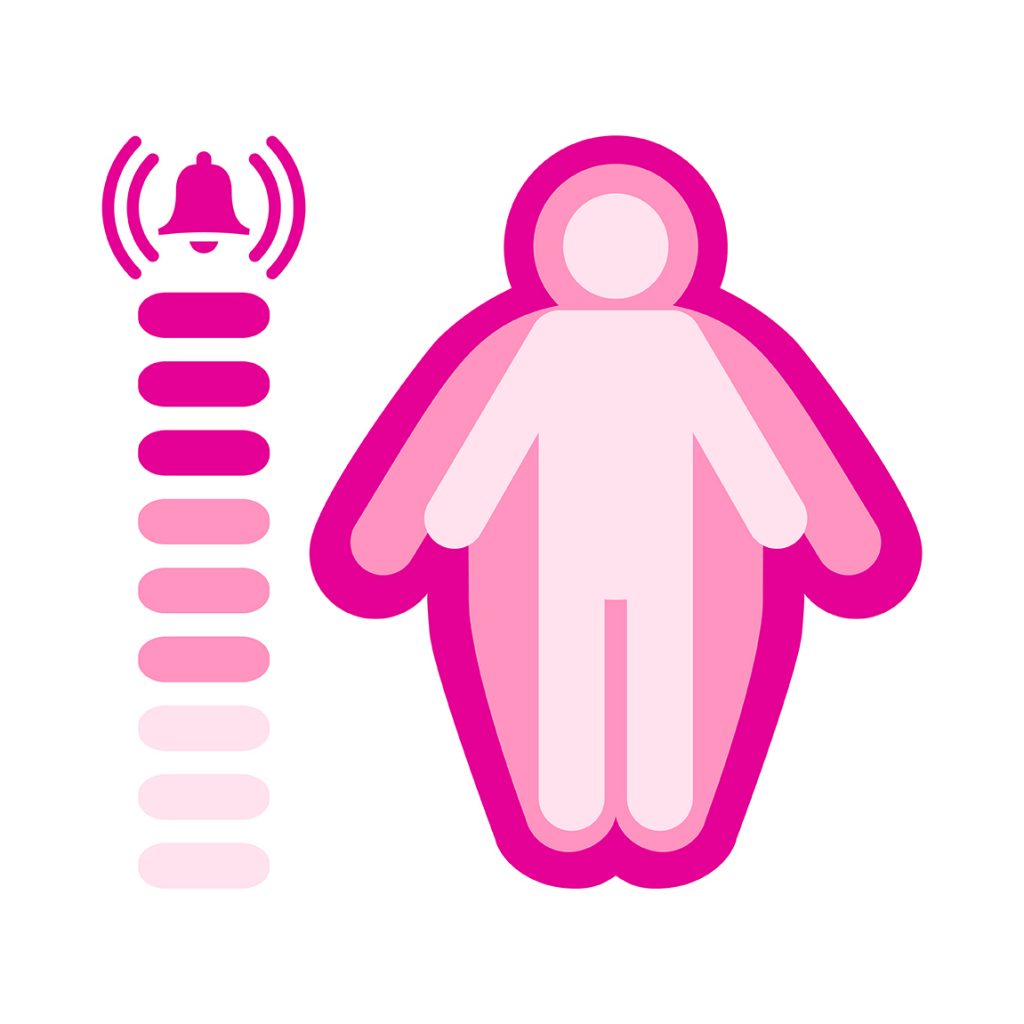Obesity
6 Primary Causes of Obesity
What does being Obese or Overweight mean? What are its primary causes?
There are several factors that come into play leading to this global epidemic.
Summary: 60 Second Read
Primary causes of obesity-

What are Obesity and Overweight?
Overweight and obesity are defined as abnormal or excessive fat accumulation that may impair health.
Body mass index (BMI) is a simple index of weight-for-height that is commonly used to classify overweight and obesity in adults. It is defined as a person's weight in kilograms divided by the square of his height in meters (kg/m2).
Adults
For adults, WHO defines overweight and obesity as follows:
- Overweight is a BMI greater than or equal to 25; and
- Obesity is a BMI greater than or equal to 30.
BMI provides the most useful population-level measure of overweight and obesity as it is the same for both sexes and for all ages of adults. However, it should be considered a rough guide because it may not correspond to the same degree of fatness in different individuals.
For children, age needs to be considered when defining overweight and obesity.
Children under 5 years of age
For children under 5 years of age:
- Overweight is weight-for-height greater than 2 standard deviations above WHO Child Growth Standards median; and
- Obesity is weight-for-height greater than 3 standard deviations above the WHO Child Growth Standards median.
- Charts and tables: WHO child growth standards for children aged under 5 years
Children aged between 5–19 years
Overweight and obesity are defined as follows for children aged between 5–19 years:
- overweight is BMI-for-age greater than 1 standard deviation above the WHO Growth Reference median; and
- obesity is greater than 2 standard deviations above the WHO Growth Reference median.
- Charts and tables: WHO growth reference for children aged between 5–19 years
Leading causes for Obesity are
1. Unhealthy Lifestyle Habits
Lack of physical activity, unhealthy eating patterns, not enough sleep, and high amounts of stress can increase your risk for overweight and obesity.
Lack of Physical Activity
Lack of physical activity due to high amounts of TV, computer, videogame or other screen usage has been associated with a high body mass index (BMI). Healthy lifestyle changes, such as being physically active and reducing screen time, can help you aim for a healthy weight.
Unhealthy Eating Behaviors
Some unhealthy eating behaviors can increase your risk for overweight and obesity.
- Eating more calories than you burn. The amount of calories you need will vary based on your sex, age, and physical activity level.
- Eating too much saturated and trans fats.
- Eating foods high in added sugars.
Not Enough Sleep
Many studies have seen a high BMI in people who do not get enough sleep. Some studies have seen a relationship between sleep and the way our bodies use nutrients for energy and how lack of sleep can affect hormones that control hunger urges.
High Amounts of Stress
Acute stress and chronic stress affect the brain and trigger the production of hormones, such as cortisol, that control our energy balances and hunger urges. Acute stress can trigger hormone changes that make you not want to eat. If the stress becomes chronic, hormone changes can make you eat more and store more fat.
2. Age
Childhood obesity is emerging as one of the major health concerns in recent years, and some populations are more at risk for childhood obesity than others. The risk of unhealthy weight gain increases as you age.
Adults who have a healthy BMI often start to gain weight in young adulthood and continue to gain weight until 60 to 65 years old, when they tend to start losing weight.
3. Unhealthy Environments
Many environmental factors can increase your risk for overweight and obesity: such as, easy access to unhealthy fast foods, limited access to recreational facilities or parks, and few safe or easy ways to walk in your neighborhood.
4. Family History and Genetics
Genetic studies have found that overweight and obesity can run in families, so it is possible that our genes or DNA can cause these conditions. Research studies have found that certain DNA elements are associated with obesity.(source)
5. Race or Ethnicity
Overweight and obesity is highly prevalent in some racial and ethnic minority groups. While Asian men and women have the lowest rates of unhealthy BMIs, they may have high amounts of unhealthy fat in the abdomen. This condition is medically labelled as truncal obesity.
Rates of obesity in American adults are highest in blacks, followed by Hispanics, then whites. This is true for men or women. Samoans may be at risk for overweight and obesity because they may carry a DNA variant that is associated with increased BMI but not with common obesity-related complications.
6. Gender
Obesity is more common in women than in men. A person’s sex may also affect the way the body stores fat. For example, women tend to store less unhealthy fat in the abdomen than men do.
Overweight and obesity is also common in women with polycystic ovary syndrome (PCOS). This is an endocrine condition that causes large ovaries and prevents proper ovulation, which can reduce fertility.
Bottomline
Many factors play a role in the development of obesity. Genetic traits can increase the risk in some people.
A healthful diet that contains plenty of fresh food, together with regular exercise, will reduce the risk of obesity in most people.
However, those that have a genetic predisposition may find it harder to maintain a healthy weight.
Reference:
- https://www.who.int/news-room/fact-sheets/detail/obesity-and-overweight
- https://www.cdc.gov/obesity/adult/causes.html





































































































